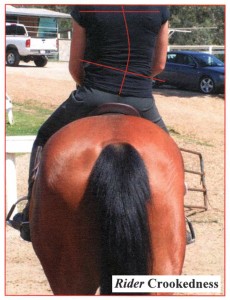
Posture, flexibility and grip strength in horse riders
The aim of this study was to determine different types of asymmetry in riders and to determine whether typical traits exist due to riding. In total 122 right handed participants from different dressage levels and different years of experience joined the study.
A trend is seen in riders with postural defects developing back and/or neckpain with an increased level of competition. It may be clinically important that in an increased riding level the prevalence of pain due to asymmetry in lateral bending is increased too.
There are several reasons for reduced lateral bending and back pain. A higher lumbar motion asymmetry may be a reason for back pain. Higher level riders with postural defects may have more difficulty in absorbing the vertical movements of the horse which increases pain and muscle stiffness. This may be due to sitting in upright dressage posture. Beside the mentioned reasons there are more reasons for reduced lateral bending motion like a left axial rotation postural position of the trunk whilst completing the exercise or pelvic asymmetry.
Conclusion is that lateral bending mobility to the left was reduced in experienced higher level riders. This may attributed to asymmetric shoulder height which suggest an asymmetric muscle development in the body. This may also be related to pain or a difference in sitting pelvic asymmetry.
> Hobbs, et al., Journal of human kinetics, 2014, vol 42/2014, 113-125. All rights reserved to Editorial Committee of Journal of Human Kinetics. Click here for the full-text on Pubmed


